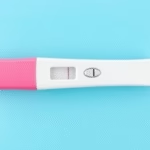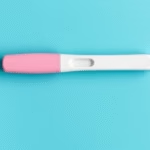Understanding Implantation Bleeding
Implantation bleeding, which may occur when a fertilized egg attaches itself to the uterine lining, can be a sign of early pregnancy. This shedding of a small amount of blood typically happens about six to twelve days after conception. It is essential to distinguish implantation bleeding from a regular menstrual period, as they can often be mistaken for each other. The bleeding is usually lighter in color and less abundant than menstrual flow, often presenting as spotting.
If you’re experiencing this kind of bleeding, it may lead you to wonder about the timing of pregnancy tests. Knowing how many days you can test after implantation bleeding can provide clarity on whether you might be pregnant. Generally, waiting three to five days after noticing implantation bleeding will increase the accuracy of your test results, as this period allows for the hormone human chorionic gonadotropin (hCG) to build up in your system sufficiently for detection.
What is Implantation Bleeding?
Implantation bleeding is a light spotting that can happen when a fertilized egg attaches itself to the uterus. This event typically occurs between 6 to 12 days post-conception. The quantity and duration of this bleeding can greatly differ among individuals. Many describe it as light pink or brown discharge rather than the bright red color typical of menstrual blood.
The underlying reason for this bleeding is the disruption of blood vessels when the embryo embeds itself in the uterine lining. While this phenomenon is often seen as an early indicator of pregnancy, it is crucial to differentiate between this experience and other forms of bleeding. Understanding these differences can assist individuals in recognizing pregnancy signs early on.
It’s advisable to consult a healthcare provider if there are any concerns about bleeding, whether it be implantation or otherwise, for proper guidance and care.
Common Symptoms of Implantation Bleeding
Recognizing the symptoms associated with implantation bleeding can help differentiate it from menstrual bleeding. The signs to look out for include:
- Timing: This usually occurs 6 to 12 days after ovulation.
- Color: The blood tends to be light pink or brown.
- Flow: It is typically much lighter than menstrual bleeding, often presenting as spotting.
- Duration: Implantation bleeding lasts for a few hours to a couple of days.
These symptoms may vary among individuals. Not everyone will notice these signs, and some may experience none at all. Keeping track of menstrual cycles and symptoms may assist in determining any differences that arise with implantation bleeding.
In summary, you can expect implantation bleeding to be lesser in volume, a different color and texture compared to your regular menstrual period, and shorter in duration. However, if you have heavy bleeding or experience pain, seeking medical advice is crucial.
Timing of Pregnancy Tests After Implantation Bleeding
When it comes to testing for pregnancy post-implantation bleeding, timing is of the essence. Understanding when to administer a pregnancy test can significantly influence the accuracy of results. Generally, urine tests are designed to detect the hormone hCG, typically after implantation bleeding has occurred.
It is most advisable to wait about three to four days after witnessing implantation bleeding. By this timeframe, the levels of hCG rise high enough for most home pregnancy tests to confirm a pregnancy. Testing too early may lead to false negatives due to insufficient hormone levels.
Some may consider waiting a full week after the first day of implantation bleeding, as this significantly increases accuracy. If results are inconclusive, retesting after a few days can provide clearer results. Additionally, blood tests performed by a healthcare provider can detect hCG levels sooner and can provide an accurate pregnancy indication around the same time as implantation bleeding.
What to Expect After Testing
Once you’ve taken a pregnancy test, you might experience a range of emotions depending on the outcome. If the test is positive, it usually indicates pregnancy, opening the door to scheduling a visit with a healthcare provider for confirmation and to discuss prenatal care. Alternatively, a negative result may lead to feelings of disappointment if a pregnancy was desired.
Should the test yield a negative result but you still suspect pregnancy, waiting a few additional days before retesting can be beneficial. Hormone levels fluctuate throughout early pregnancy, and subsequent tests can provide different outcomes. Patience is essential in this timeframe, as hormone production varies between individuals.
If there are any symptoms or concerns such as excessive bleeding or severe pain, it is advisable to reach out to a healthcare professional irrespective of test results. They can offer guidance and assistance in understanding your health status better.
Tips for More Accurate Tests
Here are several recommendations to ensure the most accurate results from your home pregnancy tests:
- Use the first-morning urine when testing, as it has the highest concentration of hCG.
- Follow the instructions on the test kit carefully, paying attention to the timing for reading results.
- Ensure that the test is not expired.
- Consider using multiple tests for added accuracy, especially if you receive differing results.
- If possible, follow up with your healthcare provider for a blood test.
By being mindful of these guidelines, individuals can enhance the effectiveness of their pregnancy tests. This will help ensure a better understanding of whether one is pregnant post-implantation bleeding.
Frequently Asked Questions
Here are some common queries regarding testing after implantation bleeding:
- Q: Can I test for pregnancy immediately after implantation bleeding?
A: No, it is recommended to wait at least three to five days for more accurate results. - Q: How long does implantation bleeding last?
A: It typically lasts a few hours to a couple of days. - Q: Can anything else cause implantation bleeding?
A: Various factors can result in similar spotting; hormonal changes, infections, or other medical conditions might contribute. - Q: What if the pregnancy test is negative?
A: You may wait several days and retest if menstruation does not occur. - Q: Does implantation bleeding always happen?
A: No, not all individuals experience this symptom during early pregnancy.
Final Thoughts
Understanding how many days can you test after implantation bleeding is essential for those trying to conceive. Implantation bleeding signifies a crucial moment in the pregnancy journey, and knowing when to test can greatly influence your experience. Generally, waiting three to five days post-implantation bleeding before testing is recommended for the best accuracy finding out if you are pregnant or not. The signs and symptoms related to implantation bleeding can vary from person to person.
Recognizing the characteristics of this bleeding, such as its timing, color, and duration, can help in distinguishing it from regular menstrual bleeding. Being well-informed about the nature of your symptoms can assist in making better decisions regarding timing for pregnancy tests. Many choose to use home pregnancy tests, which are convenient and accessible, but it is crucial to ensure that the timing of the test aligns with hormonal changes in your body.
If necessary, a follow-up with a healthcare provider can confirm pregnancy through blood tests and provide further health assistance. Each journey through potential pregnancy is unique, and having clarity on the specifics of pregnancy testing after implantation bleeding can relieve anxiety and lead to better preparation for what comes next. Regardless of the results, it is important to take care of your health and well-being during this time.
Further Reading
What Type of Psychotherapy Is Best for Anxiety?







